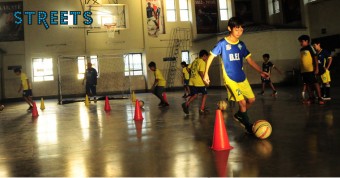The site of the Canacona tragedy
Anatomy of a Disaster Foretold
On January 9, physician 2010, the office of the Advocate Asha Desai at Panjim dispatched a legal notice to the Chief Officer of the Canacona Municipal Council. The notice warned the Chief Officer that if he does not immediately stop construction, a certain building faces collapse during the rains.
The notice, sent on behalf of one Shankar Naik, in hindsight serves as an eerie premonition to the happenings on January 4, at 2:30pm.
The under-construction Ruby Residency came crashing down, killing 31 people in the most deadly building collapse in Goan history.
Shankar Naik, who owned an adjacent property, shot off his first complaint to the South Goa Collector on November 16, 2009, around the same time that Pradeep Singh Birring and Pradeep Kumar Sehgal, both in their mid-40s and both directors of Bharat Developers, began construction at the site.
Naik argued the construction was illegal because the work had begun when permissions were applied for but not granted. He said a natural waterway was blocked by the new construction.
“With the huge flow of water which would otherwise go through the nallah but now that it has been blocked by the construction of the compound wall… there is a possibility that the building would collapse in the ensuing rainy season,” Naik had said in his complaint.
While the final cause of the collapse is not storm water but rather a weak foundation, according to experts, Naik feels vindicated, and he blames government inaction for the tragedy.
“Instead I was made to dance from pillar to post … and, in short, I was harassed because I complained,” he said.
Trouble for the building began right from the beginning. The land bought by the developers to build the “five storey construction where only three floors are allowed” is sloping and leads into a field.
Eric Pinto, a civil engineer who visited the site after the collapse, said the building was constructed with one end on rocky soil while the other end lying lower on soft soil.
“They built the foundation on recently filled soft marshy soil that caved in and weakened the columns,” he said.
Aside from this, it’s been shown that one Vishwas Desai served as both Contractor as well as Structural Engineer, a big no-no in construction projects (see writer and engineer Jose Lourenco’s piece last week on lessons learned from the collapse http://www.goastreets.in/3-lessons-canacona-collapse/#).
Naik also complained that the builders, while constructing a compound wall, encroached on his adjacent land.
Unfortunately for all, none of his complaints were heeded to and neither was the legal notice assigned any value by the Canacona Municipal Council. Several phases of the building came up.
Birring said that when he arrived on site on the fateful day, he saw a key pillar was badly damaged.
“When I asked the foreman present at the site, he said that the JCB (excavator) had accidentally hit the pillar on the evening of January 3,” Birring said in his statements to the Sessions Court at Margao.
Workers had placed a jack support of metal bars to support the pillar but the contractor wasn’t at the site. To make matters worse, workers were drilling and breaking the slab above the pillar with a jackhammer to weld metal bars to strengthen the pillar and pour concrete in the hole. “I left the site at around 1 pm and came to know around 3 pm that the building had collapsed”, Birring said.
Those working on other parts of the building were oblivious to the fact that a major column was on the verge of collapse.
Forty-year-old Laxman Gaunkar was working on the ground floor helping a mason fit tiles. As he attempted to flee during the collapse, his right leg was caught under a fallen pillar. “I shouted. Someone pulled me out”. He said there were several others who were also fitting tiles, and said he isn’t sure if all have been accounted for.
The prosecution is making a case for a well-planned conspiracy to nail both the authorities as well as the contractor and the promoters.
When the application for bail came up before the Sessions Court in Margao, the prosecution contended that “the deputy town planner (Prakash Bandodkar, who has since been suspended) deliberately and with ulterior motives conveniently issued approvals over a period of time by conspiring with the accused builder and contractor for making their own profits.”
The prosecution contended permissions were given despite there being no soil testing. It said crushed gravel was used instead of sand, among other irregularities, and that the builders sought to take advantage of a rule that states plots under 2000 sq meters can get approvals at the local level.
“The contractor split the 6000 sq. mts property into plots of 2000 sq mts to ensure that the construction file does not reach to the chief town planner,” the prosecution said.
One thing that’s very much in short supply is people taking responsibility for what happened.
While Chief Minister Manohar Parrikar initially blamed the local level Town and Country Planning Officer, he later absolved the TCP of any wrongdoing and said that the local municipality had to be held accountable for issuing construction permission.
The local municipality countered that its role is limited to issuing a construction licence, while the TCP should do the actual analysis.
The deputy town planner, Bandodkar has claimed that his role was limited to passing the plan within the prescribed limit of area under the law and “was not of a technical nature” and that he acted within the law. Canacona Municipal Engineer Ashank Naik Gaunkar told the Special Court that his duty is limited to calculating fees and other administrative tasks.
The builder blamed the contractor and the contractor said his work was fine, simply because it had passed the test of government approval.
“The buck really stops with the chief minister. Who is really monitoring what is happening in the construction sector?” an exasperated activist Sabina Martins said.




